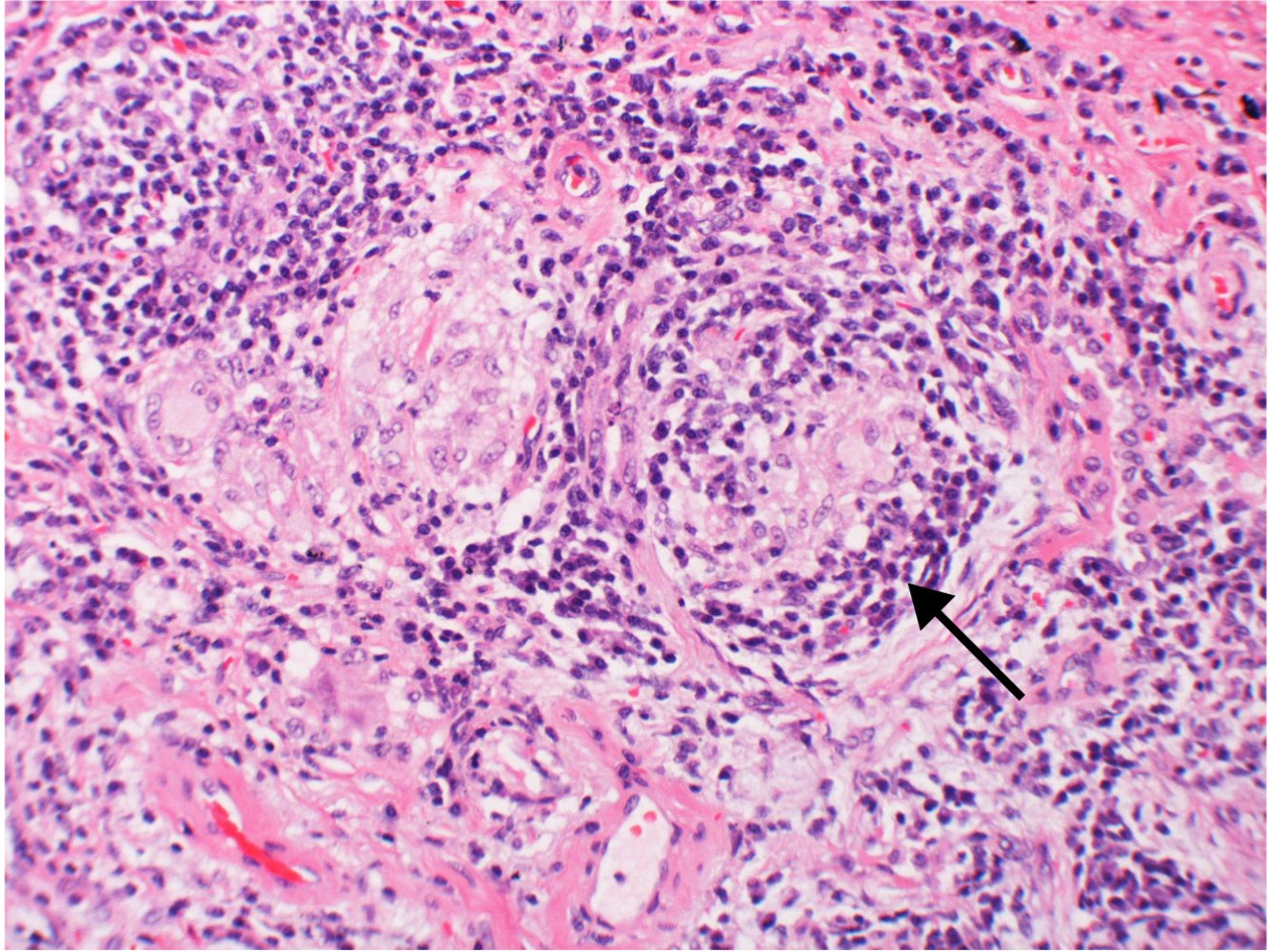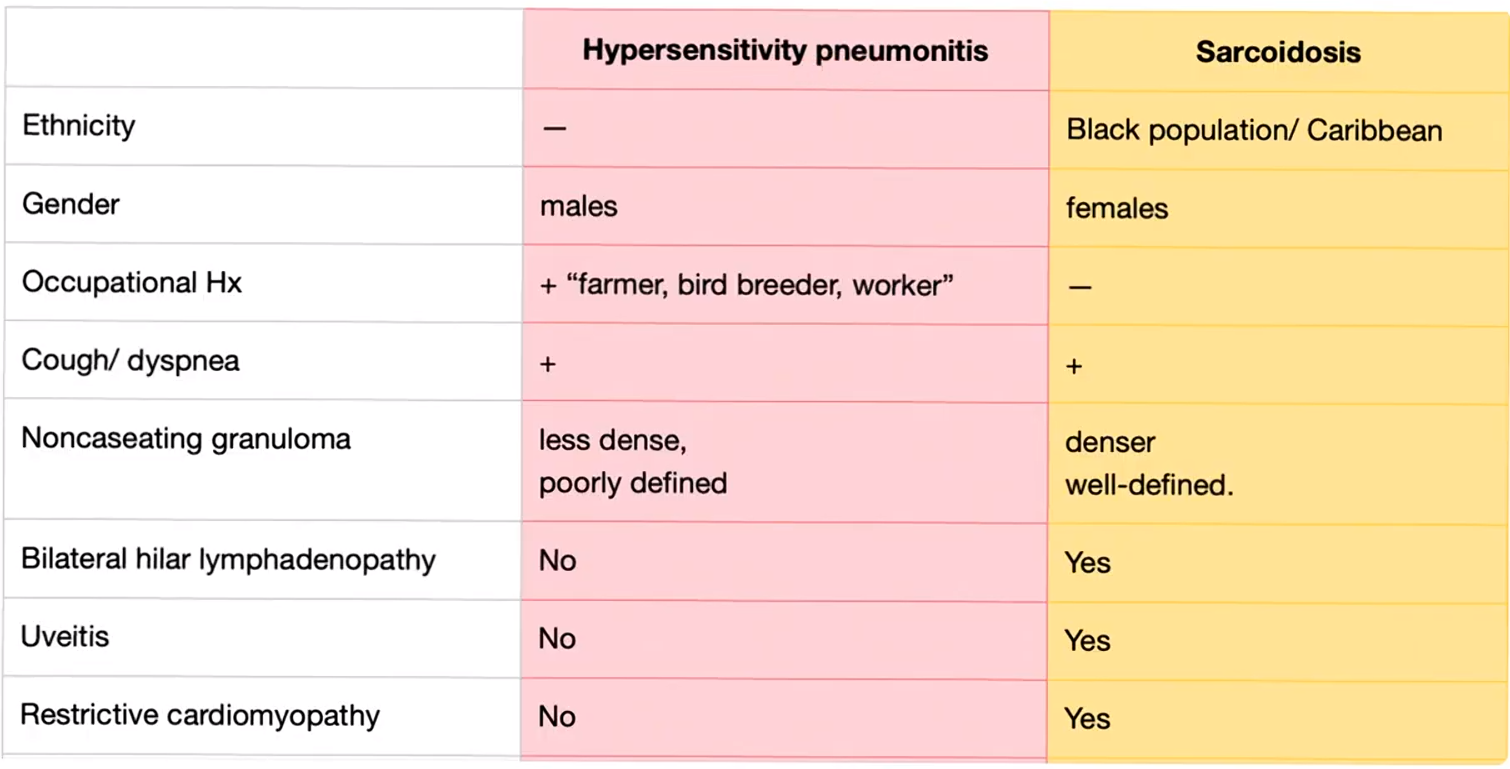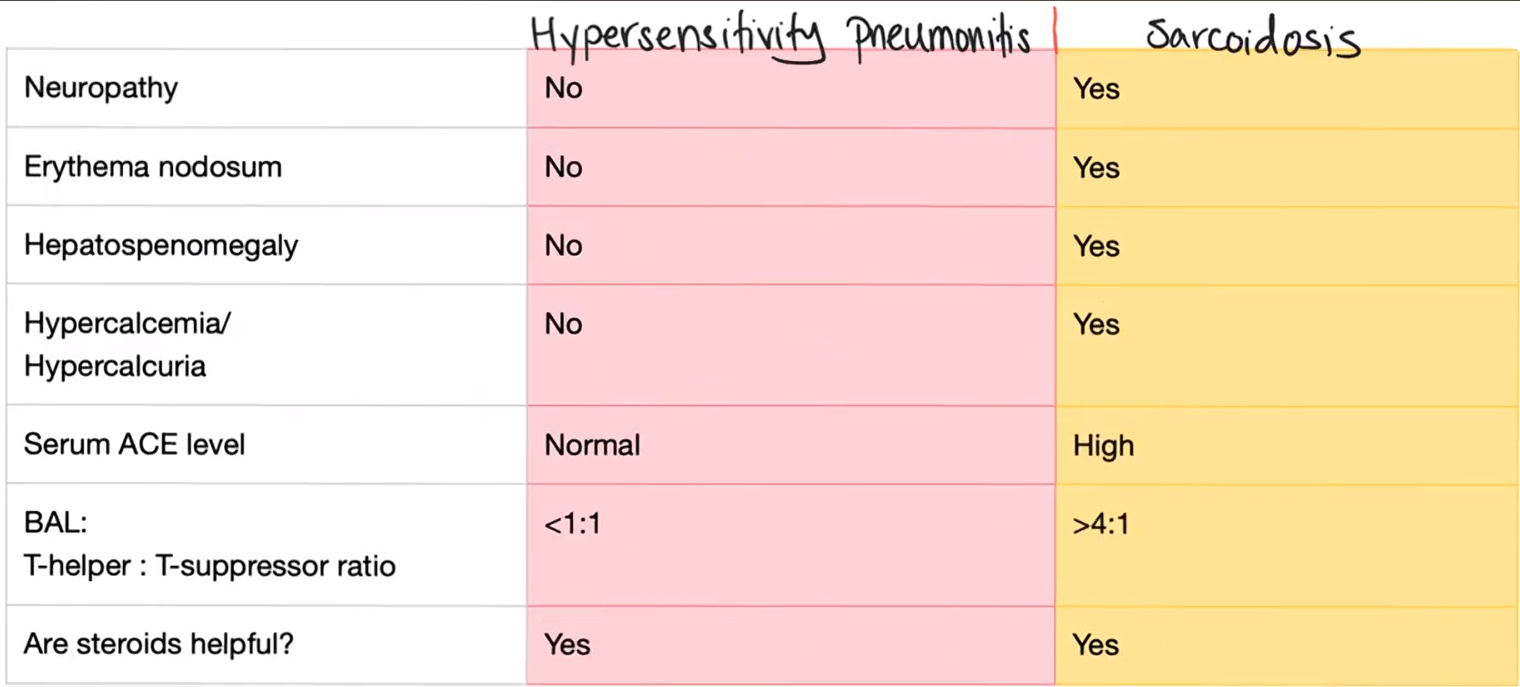Epidemiology
Etiology
Pathophysiology
Clinical features
- Acute
- Flu-like symptoms: fever, chills, malaise, cough, headache
- Dyspnea without wheezing
- Chest tightness
- Diffuse fine crackles and a late inspiratory squawk upon auscultation
- Symptoms subside within hours to days after removal of the inciting antigen.
- Chronic
- Insidious onset of fatigue, productive cough, progressive dyspnea, cyanosis
- Bilateral rales
- Weight loss
- Due to increased respiratory activity
Diagnostics
High-resolution CT
- Honeycombing (irreversible fibrotic changes) with or without emphysema
- Thickening of alveolar septa
- Traction bronchiectasis or bronchiolectasis
- Ground-glass opacities with inspiratory mosaic attenuation
Additional studies
- Bronchoalveolar lavage (BAL): Lymphocytosis (e.g., ≥ 20–30%) is highly sensitive for HP.
- Pulmonary function testing: restrictive pattern
- Lung biopsy
- Supportive findings: noncaseating granulomas with lymphocytes and polynuclear giant cells

Differential diagnostics
- Noncaseating granuloma: vs sarcoidosis


- Clinical features and HRCT: vs idiopathic pulmonary fibrosis
- IPF: Affected patients are usually older (eg, age >50) and granulomas are not expected on lung biopsy.
Treatment


